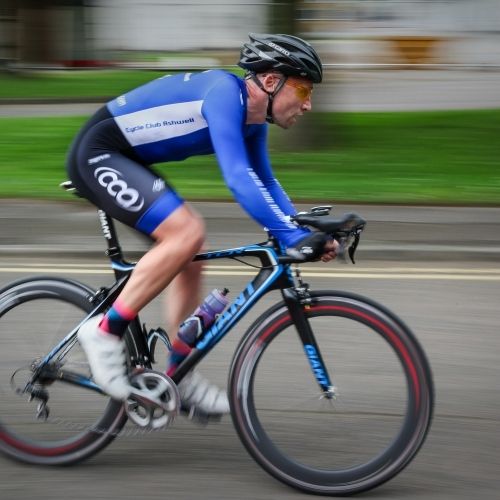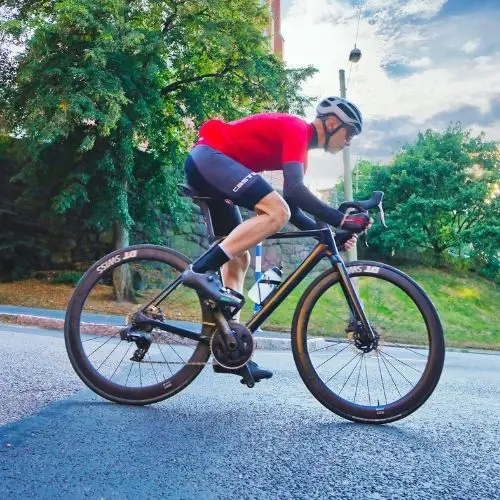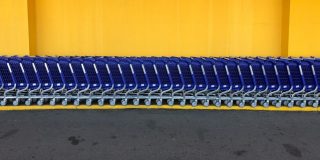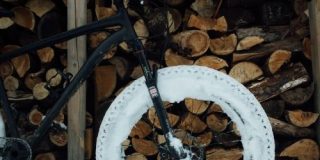Speed is typically the most obvious statistic we use to compare ourselves to others while we bike, even if it isn’t necessarily the greatest thing to measure. It’s crucial to know what a decent average for your level of experience is before you start. It’s no surprise that there are now millions of cyclists throughout the world.
You assess your cycling development in part by comparing yourself to other riders, whether you are a solo cyclist or regularly compete as part of a peloton. And you know that there was more than one individual who had rode a bike from the beginning, and each was wondering if they were as quick as, or faster than, the other. Here’s what I’ve learned from other riders and my own experience.
Average Speed For A One-Hour Ride Experience Level
- Beginner 10 mph
- Average Rider 15 mph
- Regular Training 20 mph
- Professional 25mph

On a one-hour ride, the majority of cyclists can average approximately 15 mph. For a novice, a reasonable pace is 10 mph, but you should be able to go up to 15 mph quite fast. You can get your average up to 18 mph if you start exercising now and then, but consistent training can bring you up to 22 mph. During races, professional cyclists may easily average 25 mph.
Beginner cycling speed
To give you an idea of distances and speeds, a beginning cyclist’s typical riding pace is around 12 mph. This means you’ll be running up to two miles in your first week. The 10-mile bike should be no problem after eight weeks.
Average cycling speed
You may anticipate commuting at an average pace of 11-17 mph (18-27 km/h) on hybrid bikes. Other bike styles that are ideal for commuters include cyclocross and gravel bikes, to mention a few. They generally fall between hybrids and road bikes in terms of average speed.
An expert cycling speed
Medium-long distances (say 50-60 miles): 20-24 mph, good club rider with some regular training. Experienced riders like to travel as quickly as possible while maintaining the highest degree of comfort possible. On the other hand, professional racers can easily maintain a speed of 25 mph.
Aspects Affecting Average Bicycle Speed
Several factors influence riding speed, perhaps too many to describe in-depth in a single article. These factors, on the other hand, are grouped into broader categories that help us organize and make sense of them. Physiological, environmental, Psychological Factors and mechanical factors are the four types.
1. Physiological Factors
The engines that propel a bicycle are our bodies. Our conditioning has a significant impact on how fast we can ride and how well we can maintain that speed.
But it’s not only our degree of fitness that makes a difference. Many factors influence this figure, some of which are entirely beyond our control. That is;
- Age
- Gender
- Fitness
2. Psychological Factors
There are two primary concerns when it comes to the mind’s influence on performance.
- Perception
- Skill
3. Environmental Factors
Everything from the road you’re on to the air you’re in may increase or decrease your ride’s speed. More importantly, the physical world’s fundamental forces are the ultimate arbiters of what helps and what doesn’t.
- Weather
- Terrain
- Physics
4. Mechanical Factors
Finally, there’s the bike’s function. Different models of bicycles have varying peak speeds. The bike must be carefully maintained to achieve maximum performance.
- Bicycle Types
- Maintenance
There are many reasons why average speed isn’t a good comparison metric, but the most important ones are as follows:

1. Conditions for riding
Some places are naturally exposed to strong winds regularly. Even the slightest breeze has a big influence on bicycle speed. Temperature is also an influence, with extremely hot and extremely cold weather both reducing average speed.
2. Equipment
Isn’t it true that it’s not about the bike? Well, maybe a smidgeon, especially when it comes to weight. Cyclists who switched to carbon fiber bikes informed me that their speed increased by 6-10% right away. This was a larger improvement than I anticipated, and it may only make a significant impact for riders in excellent form.
- Are there Bikes without Gears? What are Single Speeds and Fixed Gears?
- Are Gravel Bikes Faster Than Mountain Bikes?
- Can I Turn My Mountain Bike into A Gravel Bike?
3. Distance covered
The average speed varies depending on the distance traveled. Because the initial half of a ride is slower while your legs warm up, rides of less than an hour or so will generally have a somewhat lower average. The fastest riders are generally those that last between one and two hours. Then, as weariness plays a bigger role in longer rides, the average will start to decline somewhat.
For many of us, rides lasting more than three hours (assuming a fair continuous effort over those three hours!) can be exhausting.
4. Teamwork
Pace line riding, or cycling as a group, offers several advantages. For the most part, you’ll be ‘drafting’ the person in front of you, which means you’ll be exposed to little wind resistance. Although the advantages vary depending on the weather and the number of individuals in the group, it is often assumed that cycling in a group will boost the average cyclist’s pace by 20-30%, if not more.
Conclusion
By now, you should realize that attempting to establish a meaningful average that applies to all passionate riders is nearly impossible. However, by adjusting the baseline according to the influence of these numerous elements, you should be able to arrive at a figure that is useful to you.














